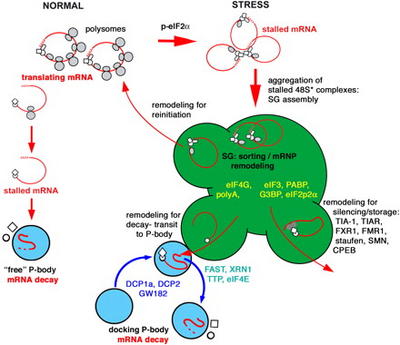The Worst Things About Science
1 - Being scooped. There is nothing worse than working your ass off for 4 years (much of it in the coldroom) when bang a paper comes out making all your work useless.
2 - Begging for money. When scientists are not working, eating, sleeping or at some seminar/conference, they are ... writing grants, fellowships ... aka begging. Their applications can be summarized as follows "I'm so great, my work is so important, look at how sexy my results are" but in reality they meant to say "if you don't give me this grant, my lab is going to sink into a deep black hole and my career is over!"
3 - Having a family. Being a scientist basically means being a workaholic. Why? Partially it's out of wanting to get things done, but mostly it's because of pressure ... "I need to get this last experiment done for my labmeeting/grant/paper/meeting with the supervisor" ... and if you think that scientists take the weekends off, think again. Most scientists I know work at least one day out of every weekend. In the end this workschedule (for some >50 hour workweek) leads to little time for unimportant things such as watching TV, and important things such as having a family. This is worse if you happen to be female, "pregnancy? I need to get my paper out!". This is a great frustration - and coupled to the fact that many institutions (such as my own) view scientific labor as cheap and plentiful, there is no economic incentive for the situation to improve - although it has been getting better as of late. The NIH's salary guidelines, to which most postdoc salaries are pegged, significantly increased a couple of years ago, but more can be done. For more on this topic click here.
4 - The pyramid scheme. Why do we tolerate the low pay, the long hours, the pain? (OK it's not that bad.) The reply goes like this "Dear student/postdoc/underling, one day you'll be a great PI (principal investigator, i.e. professor) and all your hard work will have paid off. I went through this, we all have to go through this stage, so now it's your turn to go through hell." All I have to say is ... Ponzi scheme.
5 - Reviewers. OK after a year(s) of work you compile enough data and a fancy model for a story/paper/article/publication. You send it in to a reasonable journal and they send it out for review. That's when the complicated song and dance of peer review starts. Some reviewers like it, some don't, some are reasonable, and some ARE OUT OF THEIR MIND. "That is a nice piece of work, but instead of just the moon, the authors should also get to Mars, Jupiter and alpha-Centauri before a) they can reasonably prove their assertions b) the manuscript can be acceptable for publication c) my bigshot buddy can publish his work and d) hasn't this been publish previously?" The editor (i.e. God) then has to officiate this poker match. Their rule of thumb can be summed up as "don't flinch". The moment that the editor sides with the manuscript's authors, the paper gets published ... and so their power rests in maintaining the status quo. The worst outcome of this exercise is that if the manuscript gets rejected, you then submit it to another journal AND HAVE TO GO THROUGH THIS TORTURE ALL OVER AGAIN. By the end of the protracted process (almost as long and painful as giving birth, I'm told) the paper gets published and you've survived a nervous breakdown and many sleepless nights ... only so others can FORGET TO CITE YOUR WORK WHEN THEY PUBLISH.
6 - Getting reagents from other labs. Ahhh the other song and dance. "Dear so and so, I really loved your paper (barely read it), interesting results (well actually they're pretty mediocre), we would like to test this idea (if I don't get this last piece of data that lousy reviewer #3 asked for, I'm screwed), could you send us a small amount (but not too small) of antibody/DNA/protein ... I promise to share any interesting results I get with you." Then if you're lucky they write back telling you "I need X, Y and Z's permission"/"I'm working on this same topic (i.e. get lost)". After a month and several emails (if you're very lucky) a poorly marked tube is sent to you. You use it only to find out that they sent the wrong thing. You inform them. They tell you that their staff changed and they can't locate the reagent. Then one day it finally arrives, it's what you asked for - great! You perform the experiment and ... a negative result.
7 - Tenure and other milestones. The most bizarre event I've ever seen is the "tenure process". It's a time of great stress, where Gandhi like figures turn into little Attilas. Magically your boss who use to be on your side is on your back. "Why weren't you here in the lab last Sunday night?" People flee the sinking ship, your boss looses 10lbs and half of his/her hair. Then it's over, your boss survived or he/she's moving to the University of North Dakota.
Then there are the other big milestones, the PhD thesis (i.e. procrastinate ... procrastinate ... furious writing ... 84 hours straight of writing), getting a professorship job (more begging ... and who know's where you'll end up). Each involves a distinct set of painful tasks which leads to many sleepless nights. Ahh, what fun it is to be in academic science!
OK I'll stop here for now ... but I'll continue this list some other time. If you have some other pet peeves about scientific research, let me know.









